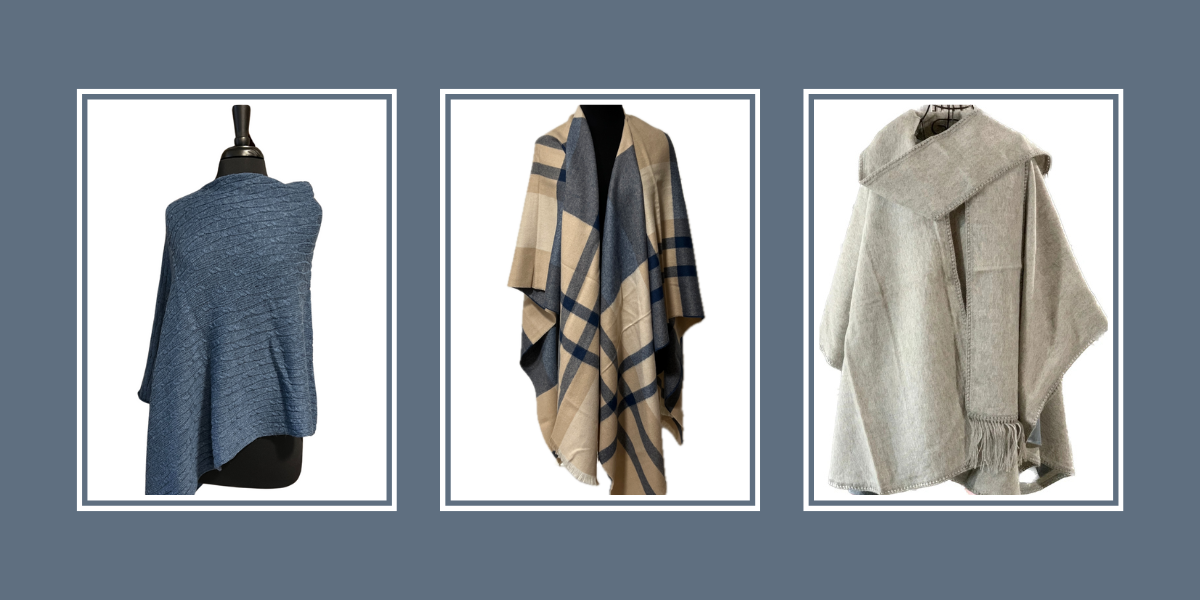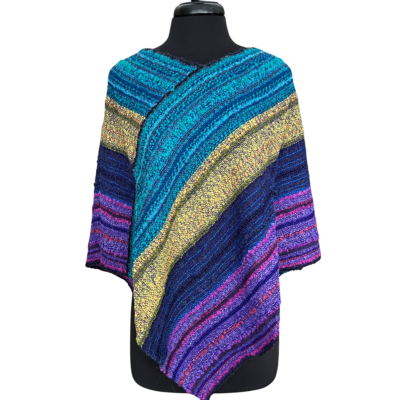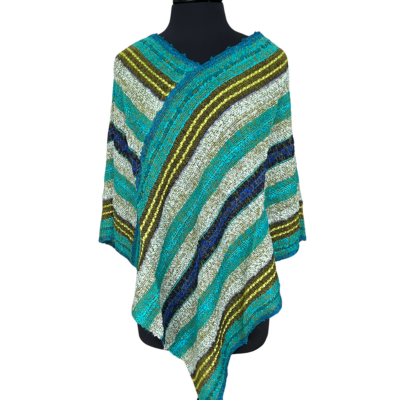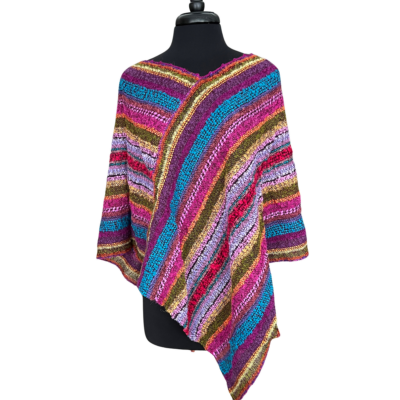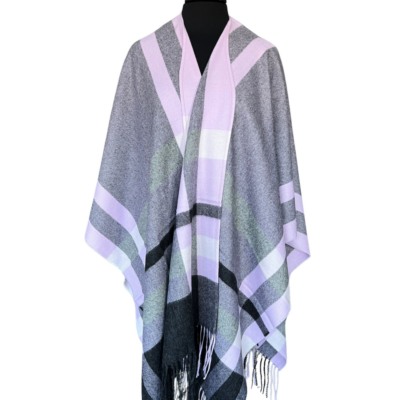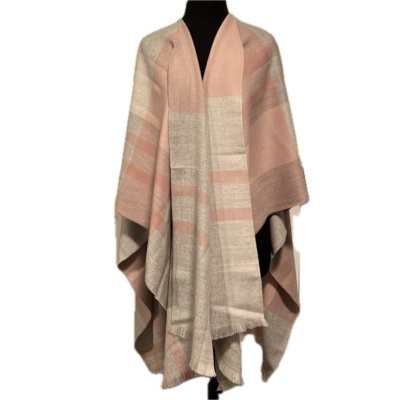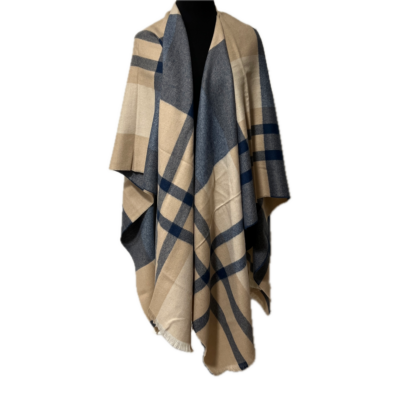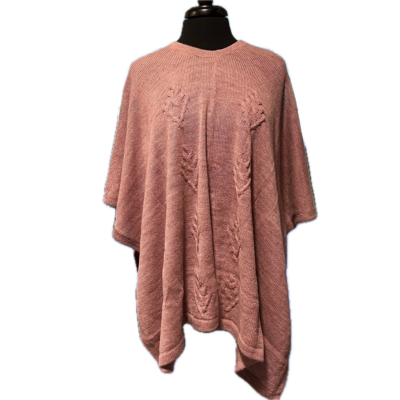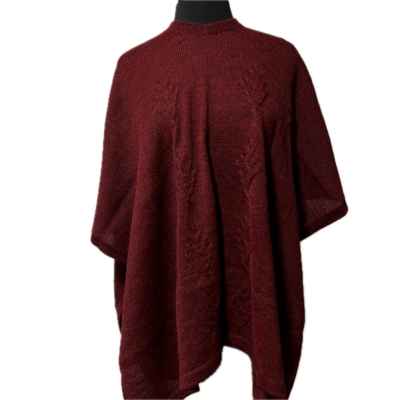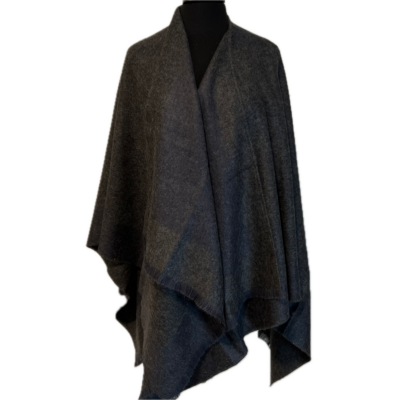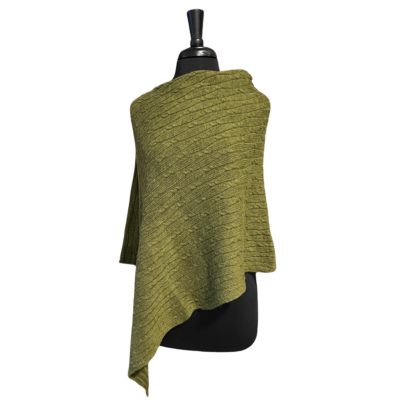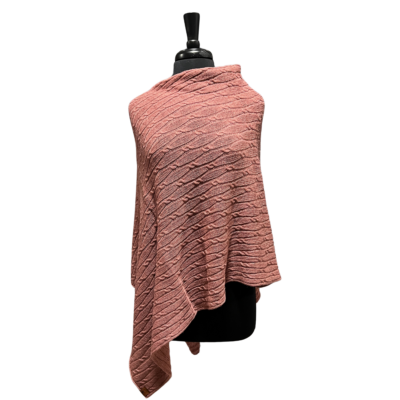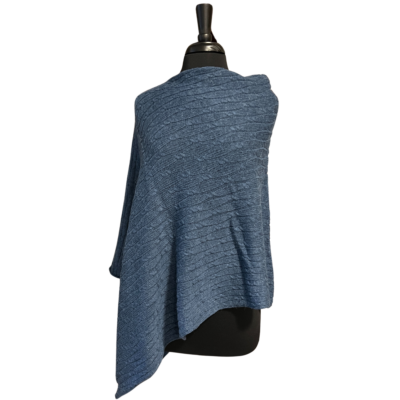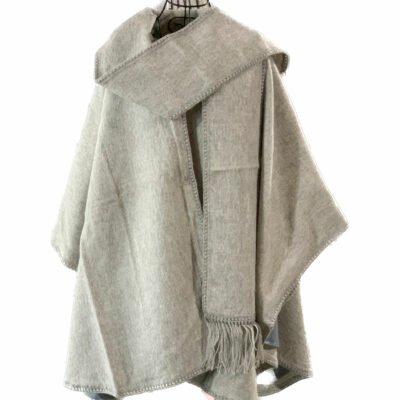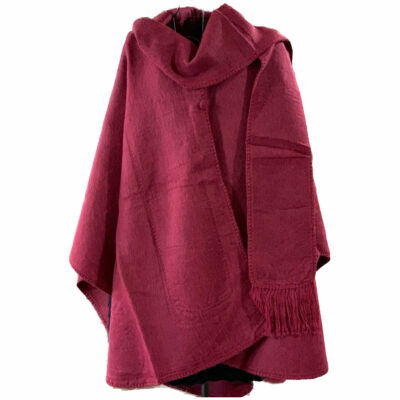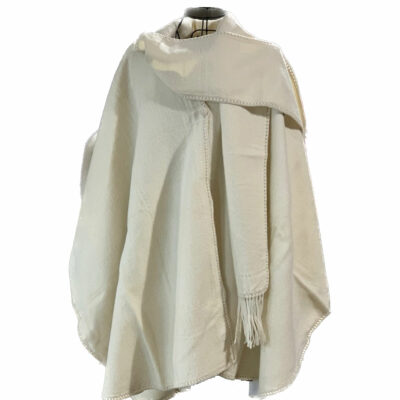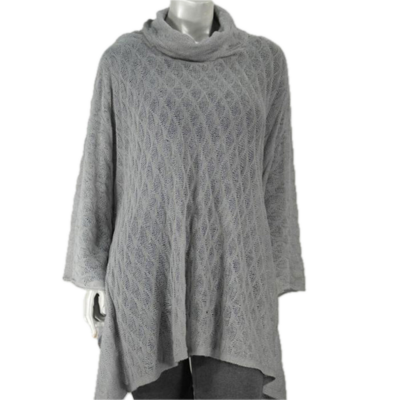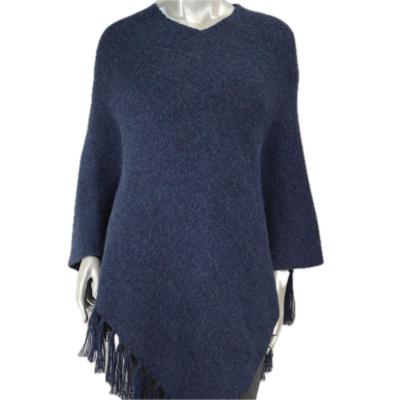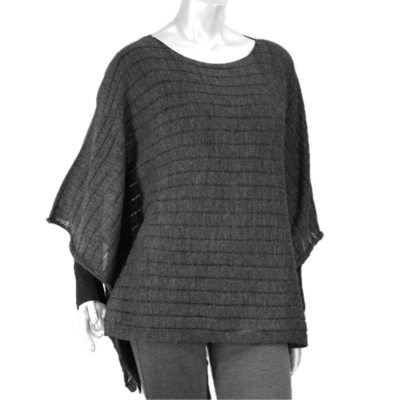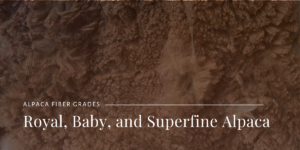When we first opened our farm store, I stocked it with all the in-demand alpaca products that I thought people would love. The store looked great, and we received lots of praise from visitors. Then one day a woman walked in and asked me where the ponchos were, and I remember laughing because I didn’t even think about stocking alpaca ponchos. I had never worn a poncho, so I didn’t even think to carry them. That was a mistake given the fact that we are an alpaca store.
When I started looking for ponchos to offer in our store, I discovered capes and ruanas. I had no idea what the difference was between the three. I’ve since learned ponchos, capes, and ruanas are similar, yet unique clothing items.
As the years past I’ve discovered my confusion was not isolated. I wasn’t the only one confused.
At first glance, a poncho may seem the same as a cape or a ruana, but each has its own history, design, and unique benefits. Let explore this further.
The Poncho: Timeless and Practical
The poncho is one of the oldest outer garments in the world, with roots tracing back to the Indigenous peoples of the Andes in South America. Traditionally, ponchos were woven from alpaca or llama wool and served both as protection against harsh mountain weather and as a cultural symbol.
When my husband and I visited Peru last year we saw ponchos everywhere. From the store shelves in Cusco to the outer areas of Arequipa, ponchos were a common clothing item.
While I’m a fan of alpaca ponchos, ponchos are made from a wide range of materials that includes cotton, wool, and acrylic. And while many of the Peruvian ponchos available will have a blend of alpaca and acrylic, the best practice for softness and warmth would be one made from 100% alpaca.
Why are ponchos so popular?
- Ponchos are effortless to wear, since they are sleeveless and loose fitting.
- Ponchos are generally one size fits all, so they are great for gifting.
- Ponchos provide full coverage against shifting weather and they are super easy to layer.
- Ponchos come in muted solid colors or bold patterns, which allows them to appeal to all types of buyers.
Alpaca ponchos elevate the popularity because they offer a lightweight warmth, their not bulky, their breathable, and their naturally natural soft and hypoallergenic.
My friend Shelly will often show up wearing a poncho at alpaca shows and they are ideal in this situation. Venue temperatures will fluctuate a lot at shows because the buildings need to stay cool for the alpacas, there are generally fans blowing everywhere, and the buildings can fill up with people quickly. This means the temperature can go from cold to hot in a blink and you want to be able to adjust your attire to accommodate this shift.
The Cape: Elegant and Versatile
The cape has a long history across Europe and other geographical areas. Worn by nobility, clergy, and even soldiers, it was a practical and fashionable way to provide warmth and protection.
Unlike the poncho, a cape drapes over the shoulders and often fastens at the neck. In modern times, capes are usually crafted from wool, cotton blends, or synthetics. An alpaca cape elevates this classic piece into even further.
Why are capes a popular option?
- Capes provide clean, elegant lines.
- Capes work well for layering over dresses, skirts, or professional attire.
- Capes provide warmth without restricting movement.
- Capes can be dressed down or dressed up given the occasion and need.
And what I love is an alpaca cape combines this timeless silhouette with fiber that’s softer, warmer, and breathable.
The Ruana: Cozy and Warm
The ruana also originates in the Andes, particularly Colombia and Venezuela, where it was traditionally handwoven from sheep’s wool. Like the poncho, it was created for warmth and utility in mountainous regions. The difference lies in its open front, which makes it function more like a wrap. Modern ruanas are made in everything from cotton to merino wool, but the drape and flow of alpaca set them apart for both comfort and elegance.
Why are ruanas a popular option?
- Like ponchos and capes, ruanas effortlessly layer over any outfit.
- Ruanas can be worn loose for comfort or belted for structure.
- Ruanas can accommodate relaxing at home, working in a chilly office, or providing coverage on a night out.
- Ruanas provide a drape, so they are flattering to a wide variety of body types.
The Peruvians make beautiful ruanas from royal or baby alpaca fiber. They are offer a classic style that supports outfits for years and years.
Alpaca Ponchos, Capes, and Ruanas All Offer Warmth, Comfort, and Classic Style
While ponchos, capes, and ruanas each have their unique qualities, they all share some wonderful similarities.
- They provide warmth without weight.
- They provide easy layering.
- They offer timeless appeal.
- They often one size fits all, so they are great options for gifts.
Whether you choose a poncho, cape, or ruana, the material matters. Alpaca is ideal because it’s:
- Alpaca is three times warmer than sheep’s wool.
- Alpaca doesn’t have lanolin, so it is hypoallergenic.
- When baby alpaca is used, the garments are super soft and never prickly.
- Alpaca is naturally breathable and temperature-regulating.
- Alpaca is very lightweight, which makes it perfect for layering.
Our Collection of Ponchos, Ruanas, and Capes
At Cotton Creek Farms, we carry a curated selection of alpaca ponchos, capes, and ruanas. Some of our products are crafted in Peru, while others are created right here in the USA. And, since I strongly believe in using alpaca for timeless styles, all of our items will be understated and will avoid trends and fads.
-
Alpaca Ponchos and Ruanas
Women’s Boucle Baby Alpaca Poncho in Shades of Blue and Purple
-
Alpaca Ponchos and Ruanas
Women’s Boucle Baby Alpaca Poncho in Shades of Green and Grey
-
Alpaca Ponchos and Ruanas
Women’s Boucle Baby Alpaca Poncho in Shades of Pink and Purple
-
Alpaca Ponchos and Ruanas
Baby Alpaca Ruana in Pink and Black
-
Alpaca Ponchos and Ruanas
Baby Alpaca Ruana in Pink and Grey
-
Alpaca Ponchos and Ruanas
Baby Alpaca Ruana in Blue & Fawn
-
Alpaca Ponchos and Ruanas
Women’s 100% Baby Alpaca Poncho in Pink
-
Alpaca Ponchos and Ruanas
Women’s 100% Baby Alpaca Poncho in Burgundy Red
-
Alpaca Ponchos and Ruanas
Dark Silver Grey Baby Alpaca Ruana
-
Alpaca Ponchos and Ruanas
Alpaca and Merino Wool Poncho in Olive Green
-
Alpaca Ponchos and Ruanas
Alpaca and Merino Wool Poncho in Demure Pink
-
Alpaca Ponchos and Ruanas
Alpaca and Merino Wool Poncho in Demin Blue
-
Alpaca Capes
Unlined Woven Alpaca Cape in Red
-
Alpaca Capes
Lined Woven Alpaca Cape in Silver Grey
-
Alpaca Capes
Lined Woven Alpaca Cape in Burgundy Red
-
Alpaca Capes
Unlined Woven Alpaca Cape in White Ivory
-
Alpaca Ponchos and Ruanas
Scala Alpaca Poncho in Putty Grey
-
Alpaca Ponchos and Ruanas
Baby Alpaca Poncho in Royal Blue
-
Alpaca Ponchos and Ruanas
Linea Baby Alpaca Poncho in Charcoal Grey
FAQs
What is the difference between a poncho and a ruana?
A poncho is a closed garment with a head opening, while a ruana is similar but features an open front, making it easier to layer and style.
Is a cape the same as a poncho?
No. A cape drapes over the shoulders and usually fastens at the neck, while a poncho is a single piece of fabric with a head opening.
Where did ponchos originate?
Ponchos trace their origins to the Indigenous peoples of the Andes in South America, where they were traditionally woven from alpaca or llama wool for warmth and cultural significance.
What are ruanas typically made from?
Historically, ruanas were made from sheep’s wool in the Andes. Today, they are crafted from wool, cotton blends, synthetics, or luxury fibers like alpaca.
When should you wear a cape, poncho, or ruana?
These garments are versatile: ponchos are great for casual outings or travel, capes elevate dressy outfits or professional looks, and ruanas are perfect for layering at home, the office, or while running errands.
Is alpaca better than wool for ponchos and capes?
Yes. Alpaca fiber is softer, warmer, more durable, and hypoallergenic compared to sheep’s wool, making it an excellent choice for ponchos, capes, and ruanas.
Can you belt a ruana or poncho?
Yes, many people style ruanas and ponchos with a belt to add shape and structure while keeping the cozy drape.
Are ponchos, capes, and ruanas still in style?
Absolutely. These garments are timeless classics that have been worn for centuries, and modern designs keep them fashionable season after season.

